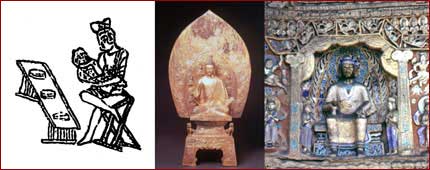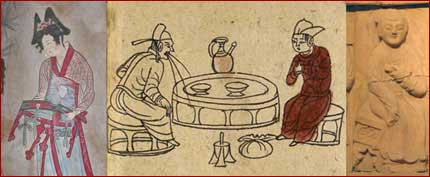The stool was the most common and also earliest type of raised seating furniture in China. Its forms, style, and quality are numerous and also reflect wide ranging use. Stools were commonly made of wood, bamboo, cane, root, porcelain and stone. High quality stools were made of precious hardwoods orfinely finished with lacquer. However, of those made during the Ming and Qing dynasties, only the durable or well-cared for pieces have survived.

In any early culture, primitive stools may have been no more than a block of timber or piece of stone.Throughout its long history, stool forms evolved with gradual developments including foreign influences that migrated from Central Asia along the Silk Route. The folding stool from the Han dynasty has long retained the term ‘foreign seat’ (hu chuang); early platforms and other seat forms recall the waisted Greek pedestal and bear association with transmissions of Buddhism from India. By the Song dynasty, these influences had become fully integrated into the Chinese milieu of structural and decorative techniques.

The practical stool filled both social and functional needs. Large stools served as a platform to elevate one of dignified status. In formal groupings with chairs, the stool was a marker of subservient status. In casual gatherings, friends all gathered around to sit on stools without the pretension of hierarchical rank. Aside from seating, the multi-functional stool also served as a stand, step stool, low table and work bench.
